Is matcha green tea a sip of the seaside or a mouthful of grass?
Time to find out before you commit to a tea that might make you say ‘Ew, no!‘
Cutting the chase, what does matcha green tea taste like?
Matcha green tea has a unique, earthy, and slightly bitter taste. It’s often described as having a strong, grassy or vegetal flavor with a hint of sweetness. The taste can be intense, but many people enjoy its bold and refreshing profile.
But don’t let the ‘seaside‘ or ‘grass‘ comparisons scare you off just yet!
Matcha’s flavor is an acquired taste, much like fine wine or gourmet cheese.
Without further ado, let’s talk about different tasting notes of matcha, types, taste of matcha latte and more!

What Does Matcha Latte Taste Like?
A Matcha Latte tastes like a combination of earthy, vegetal, and slightly bitter flavors.
When you take a sip of a Matcha Latte, you’ll immediately notice a bold and distinct flavor profile.
The dominant taste in a Matcha Latte is the earthy and slightly bitter essence of matcha, a finely ground green tea powder.
The core taste of matcha is akin to a rich and grassy note, with a noticeable vegetal undertone.
This unique quality sets it apart from regular green tea, imparting a bold and unmistakable character.
The creamy milk in your Matcha Latte adds a soothing and subtly sweet layer to the mix.
This creamy aspect not only complements but also tempers the natural bitterness of the matcha.
The choice of milk, whether it’s cow’s milk, almond milk, or any other variety, can influence the overall taste and creaminess of your latte.
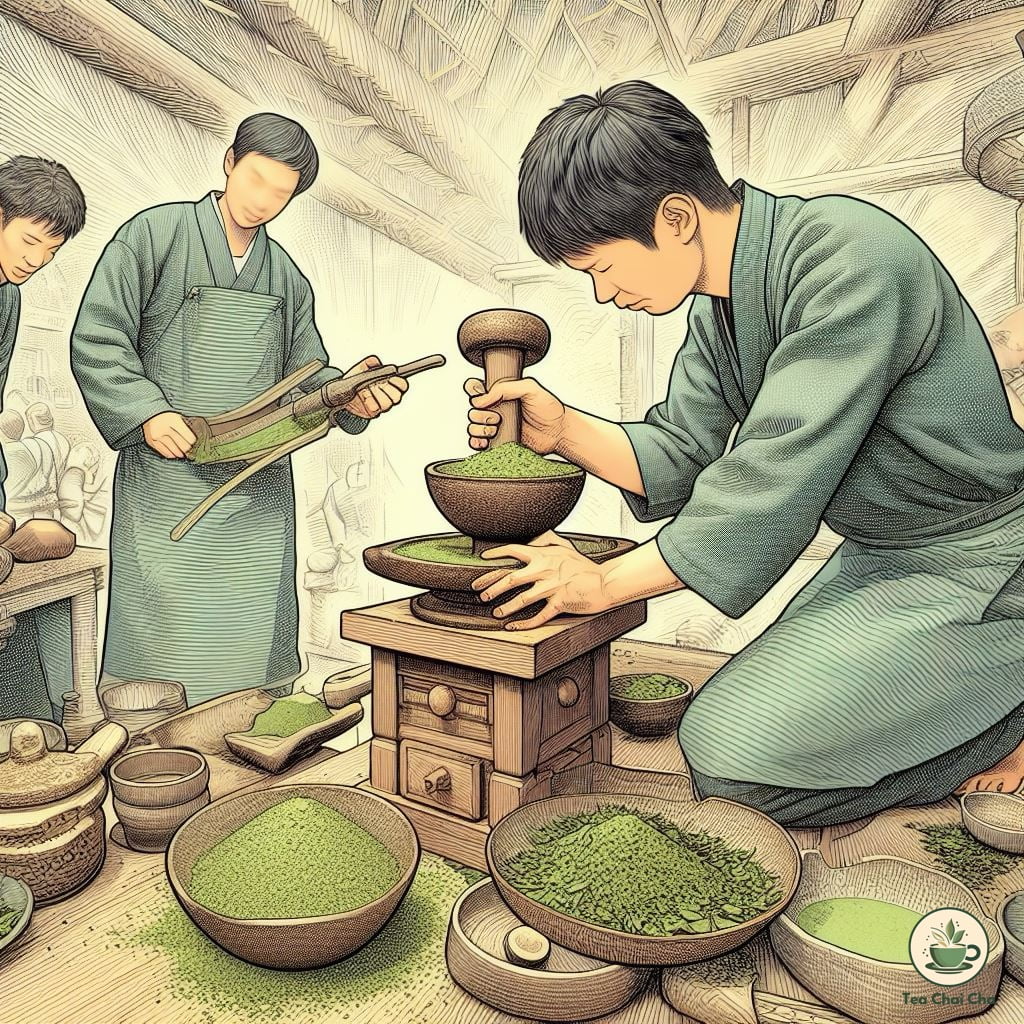
Why Does Matcha Green Tea Taste So?
Matcha green tea’s unique taste comes from the entire tea leaf being ground into a fine powder.
Unlike traditional tea, it contains no tea bags or loose leaves.
It has a robust flavor because of this.
This method also retains more of the leaf’s natural components, including chlorophyll.
This gives matcha its distinctive earthy and grassy taste.
Additionally, these 90% shade-grown matcha tea leaves have higher levels of amino acids, like L-theanine, which contribute to its rich umami flavor.
So, matcha’s taste is the result of meticulous processing and the preservation of natural compounds.
4 Different Tastes of Matcha Green Tea
Here’s a low-down on how many different flavors can be hidden in every sip of matcha green tea.
1. Grassy and Earthy Notes
The grassy and earthy notes in matcha green tea are because it’s made from shade-grown tea leaves.
The shading process enhances the chlorophyll content in the leaves, giving them a grassy and vegetal flavor.
The earthy undertones can be attributed to the soil and the tea plant’s environment.
2. Umami, the Fifth Taste
Matcha’s umami taste, often described as savory or brothy, is a result of the amino acid L-theanine.
It’s found in high amounts in matcha due to the shading process, which encourages L-theanine production.
In the case of matcha green tea, this umami flavor is akin to seaweed taste, with oceanic undertones.
This unique flavor adds depth to matcha’s profile.
3. Bitterness: A Delicate Balance
Matcha can have a hint of bitterness, but it’s not unpleasant (at least not for all).
This bitterness is linked to the presence of catechins, which are antioxidants.
The careful balance of bitterness with the other flavors is essential in high-quality matcha.
4. Sweetness and Creaminess
Matcha also carries a natural sweetness and creaminess.
This sweetness is a result of the shade-growing process, as it increases the concentration of natural sugars in the leaves.
The creamy texture is achieved by finely grinding the entire tea leaf into powder.
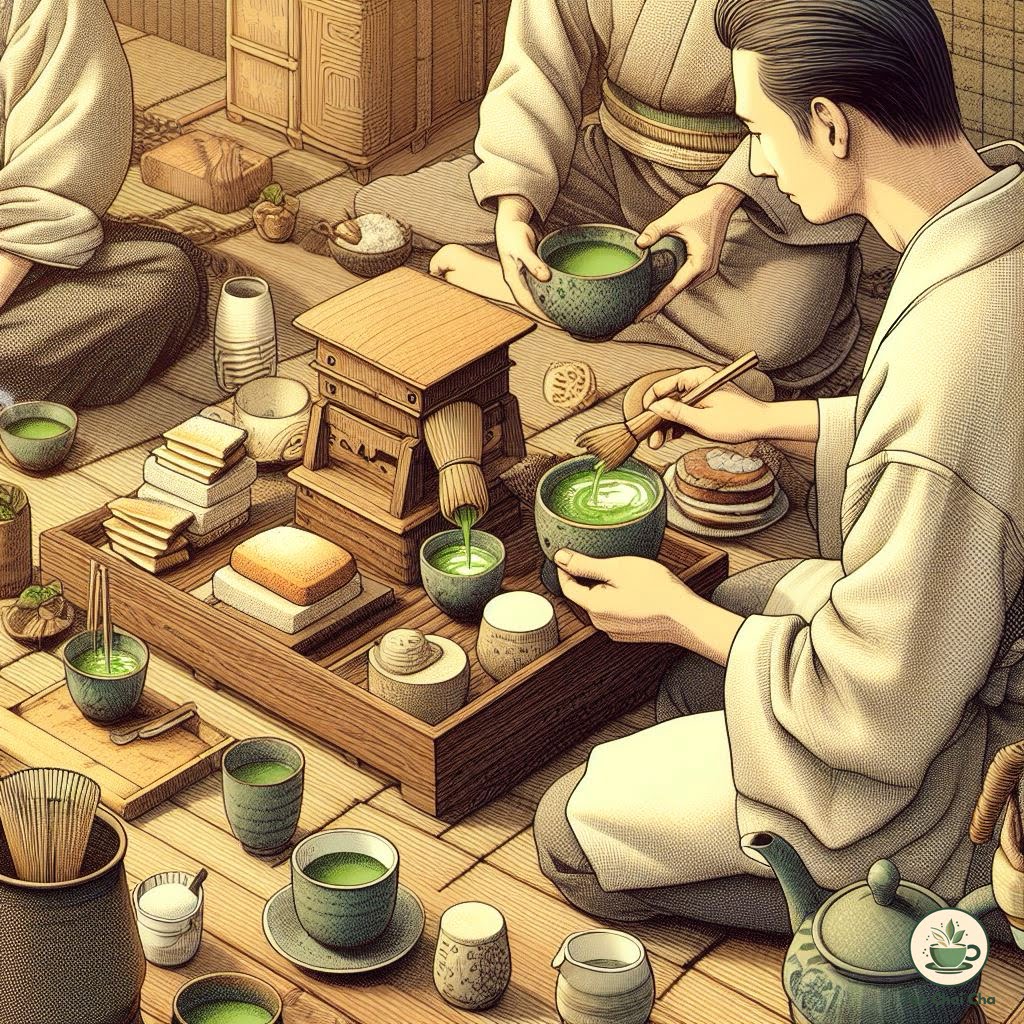
What Do Different Grades of Matcha Green Tea Taste Like?
Matcha is available in four different grades: Ceremonial, Culinary, premium, and ingredient grade.
Here’s how these matcha green tea powders taste like:
1. Ceremonial Matcha Taste
Ceremonial matcha is the highest grade, known for its exquisite taste.
It’s 10-15x pricier than other types of matcha.
It boasts a vibrant, rich, and slightly sweet flavor.
This remarkable taste comes from the way it’s grown and processed.
Ceremonial matcha is made from young tea leaves, shaded from sunlight.
It enhances the chlorophyll content and creates a naturally sweet taste.
It’s often described as smooth and grassy, with hints of umami, making it perfect for traditional Japanese tea ceremonies.
2. Premium Matcha Taste
Premium matcha strikes a balance between ceremonial and culinary matcha.
It has a pleasant umami note with a touch of bitterness.
The tea leaves for premium matcha are a bit older than ceremonial matcha, allowing it to have more complex flavors.
The combination of shade and sunlight exposure during cultivation contributes to its unique taste.
3. Culinary Matcha Taste
Culinary matcha is primarily used in cooking, so its taste is bolder and more bitter compared to ceremonial or premium matcha.
This boldness makes it an excellent choice for baking, smoothies, and savory dishes.
The leaves used for culinary matcha are typically grown under more sunlight, resulting in a stronger, slightly astringent flavor.
It’s not the choice for sipping on its own, but it excels when paired with other ingredients.
4. Ingredient Matcha Taste
Ingredient matcha is the most budget-friendly option and generally used for adding matcha flavor to various recipes.
It has a milder taste compared to culinary matcha, making it versatile for both sweet and savory dishes.
The flavor is somewhat astringent and lacks the sweetness found in ceremonial matcha.
It’s not for enjoying as a standalone tea, but it can transform your favorite recipes with a subtle matcha kick.
Which Matcha Green Tea Type Is Best for Who?
When selecting a matcha green tea, it’s important to consider your purpose, whether for sipping, cooking, or baking.
Here’s a brief guide that outlines the matcha grade, taste, and the best uses for each type.
| Matcha Grade | Taste | Best for Who |
|---|---|---|
| Ceremonial Matcha | Rich, Sweet, Umami | Those who appreciate pure, high-quality tea; Traditional tea ceremonies. |
| Premium Matcha | Umami with Slight Bitterness | Tea enthusiasts seeking balance; Everyday sipping. |
| Culinary Matcha | Bold and Bitter | Culinary enthusiasts, bakers, and chefs; Cooking and baking. |
| Ingredient Matcha | Mild with Astringency | Budget-conscious individuals; Versatile recipes and beverages. |
Effect of Tea Processing on Matcha Green Tea Flavor
The distinctive flavor of matcha green tea is a result of several carefully controlled processes, from leaf selection and shading to grinding and storage.
1. Matcha Tea Leaves Selection
The flavor of matcha green tea begins with the careful selection of tea leaves.
Quality matcha is made from young tea leaves that are up to 90% shaded from sunlight for several weeks before harvesting.
This shading process enhances the flavor by increasing the chlorophyll content, resulting in a rich, vegetal taste with a hint of sweetness.
2. Steaming and Drying
After harvest, the tea leaves are quickly steamed to prevent oxidation.
This step helps preserve the fresh, grassy flavor of the tea.
Next, the leaves are dried to remove moisture and lock in their unique taste.
3. Tencha Leaf Grinding
Matcha is produced by grinding the dried tea leaves into a fine powder, known as tencha.
The grinding process is slow and precise, which helps retain the tea’s intense flavor.
It results in a vibrant green powder with a slightly astringent and sweet flavor.
4. Stone Grinding
Traditionally, matcha is ground using stone mills.
This slow and steady process minimizes heat generation, ensuring the tea’s flavor remains intact.
The stone grinding gives matcha a smooth and creamy texture with a full-bodied, umami taste.
5. Blending for Consistency
Matcha producers often blend different grades of tencha to achieve a consistent flavor profile.
This blending ensures that every bowl of matcha you prepare has the same taste characteristics.
And making it easier to enjoy its unique and pleasant flavor.
6. Storage and Packaging
Proper storage is vital to maintain matcha’s flavor.
It should be kept in airtight containers away from light and moisture.
Quality matcha retains its distinct flavor even after months of storage if stored correctly.

How to Buy the Best Tasting Matcha Green Tea
When you’re on the hunt for the best-tasting matcha green tea, there are some pro tips to keep in mind.
1. Grade Matters
As you know, matcha comes in different grades, and this plays a big role in its flavor.
Ceremonial grade is the highest quality and has a smooth, sweet taste.
It’s perfect for traditional tea ceremonies.
Culinary grade, on the other hand, is used in cooking and may have a more robust, slightly bitter flavor.
Ensure you pick the right grade for your needs.
2. Origin and Source
Where your matcha comes from makes a difference.
Japanese matcha is well-known for its high quality.
Look for matcha that is sourced from Japan, particularly regions like Uji, Nishio, or Kyoto.
These areas have a reputation for producing the finest matcha.
3. Color Clues
The color of matcha can give you hints about its quality and flavor.
Vibrant green matcha is usually fresher and has a sweeter taste.
Avoid matcha that’s dull or yellowish, as it may be old or lower in quality.
4. Reading Labels
Pay attention to the labels.
Look for matcha that is pure and free from additives or fillers.
Some labels might mention additional ingredients like sugar or artificial flavorings, which can affect the taste.
5. Taste Test
Sometimes, the best way to find your favorite matcha is by trying different brands.
Purchase small quantities from various brands and do a taste test.
It’s the most direct way to determine your personal preference.
7. Aroma Check
Before buying, give your matcha a sniff.
High-quality matcha has a fresh, grassy aroma.
If it smells off or has a stale odor, it’s probably not the best choice.
8. Store It Right
Once you’ve found your perfect matcha, store it properly.
Keep it in an airtight container away from light and heat.
This preserves its freshness and flavor.
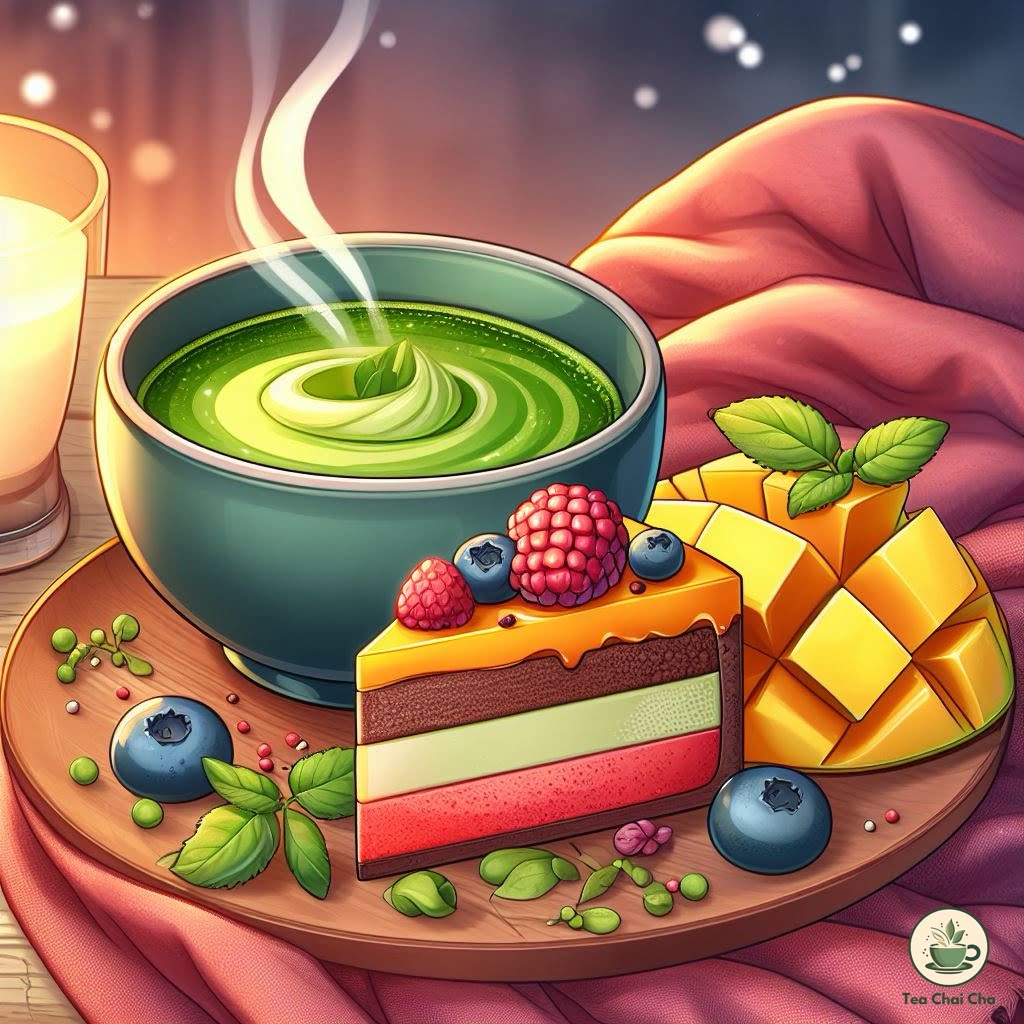
What Flavors Pair Well with Matcha Green Tea
When it comes to Matcha Green Tea, there are some fantastic flavor combinations to explore with different foods.
1. Sweet and Fruity
Matcha pairs wonderfully with sweet and fruity flavors.
Think about enjoying it with a slice of mango or a berry-filled dessert.
The natural sweetness of fruits complements the earthy notes of Matcha, creating a harmonious blend.
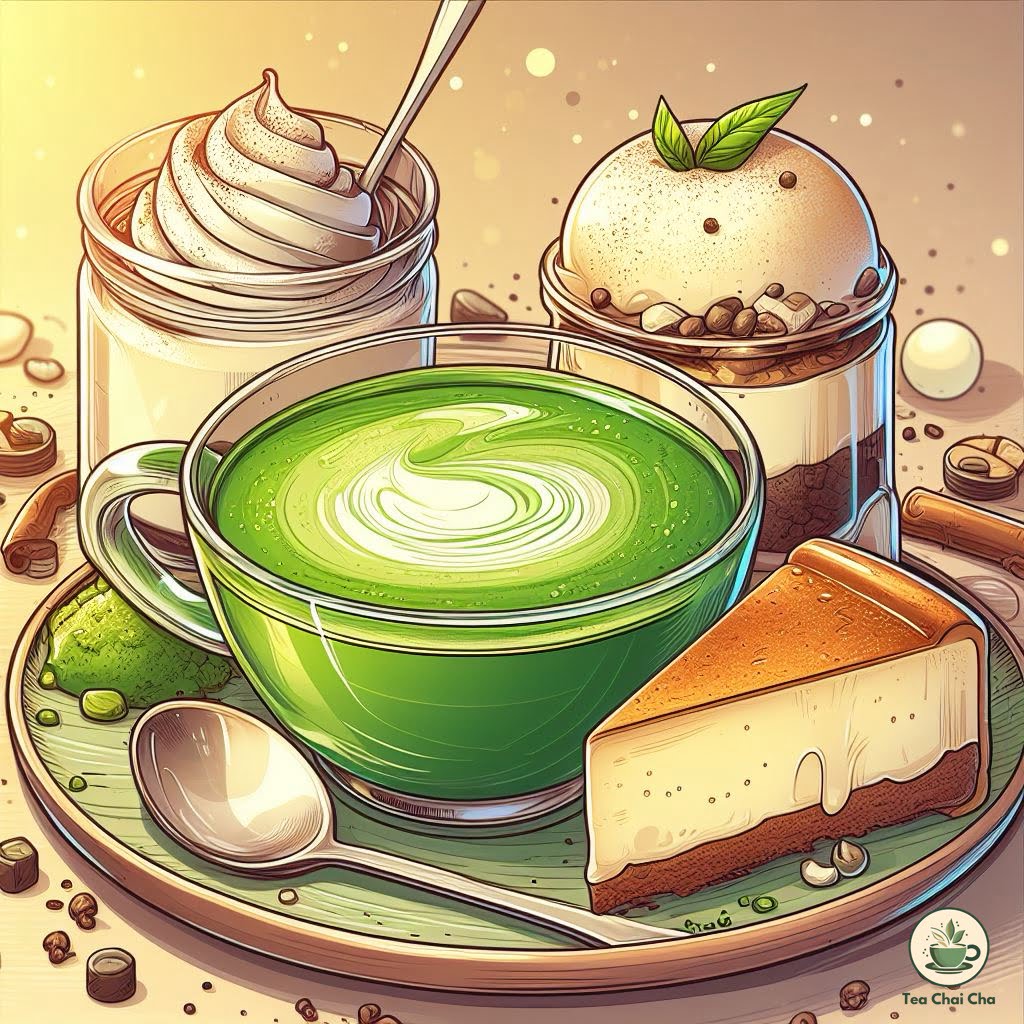
2. Creamy Delights
Creaminess and Matcha go hand in hand.
Try it with a scoop of vanilla ice cream, a creamy cheesecake, or even a custard.
The smooth texture of these treats balances the slightly bitter taste of Matcha.
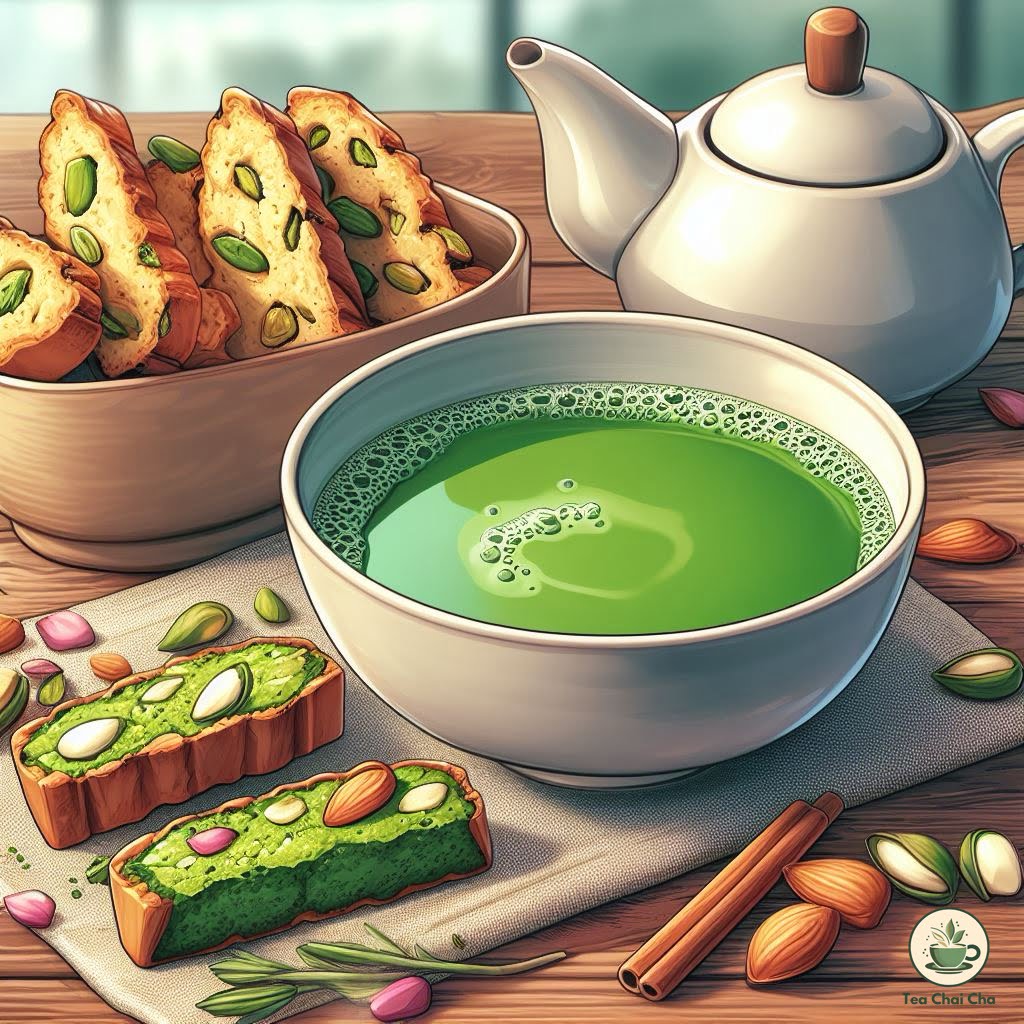
3. Nutty Goodness
Nuts like almonds and pistachios add a delightful crunch to your Matcha experience.
Consider having some almond biscotti or pistachio-flavored pastries alongside your tea.
The nuttiness complements Matcha’s complexity.
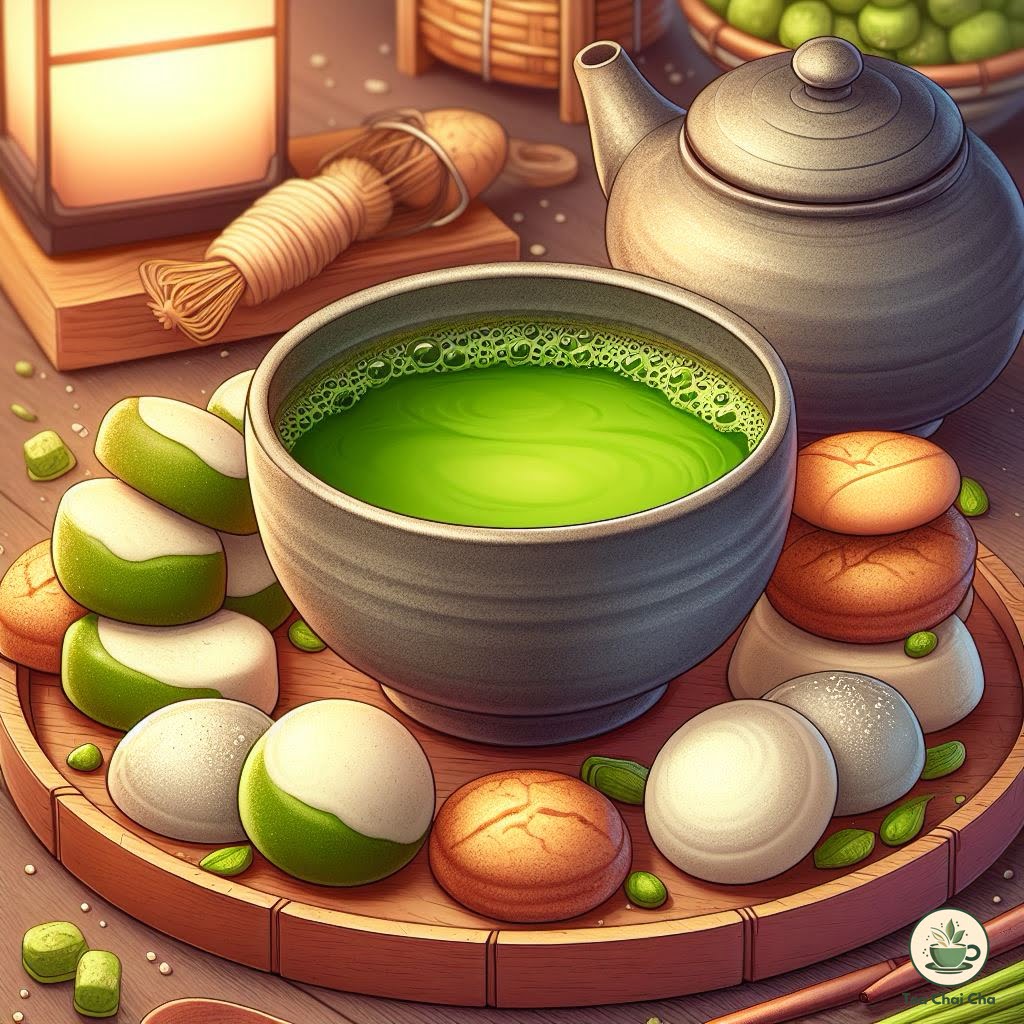
4. Zen and Simplicity
For a pure Matcha experience, savor it with simple Japanese snacks like mochi, which are soft rice cakes, or delicate matcha-flavored cookies.
These treats embrace the essence of Matcha without overshadowing its natural taste.
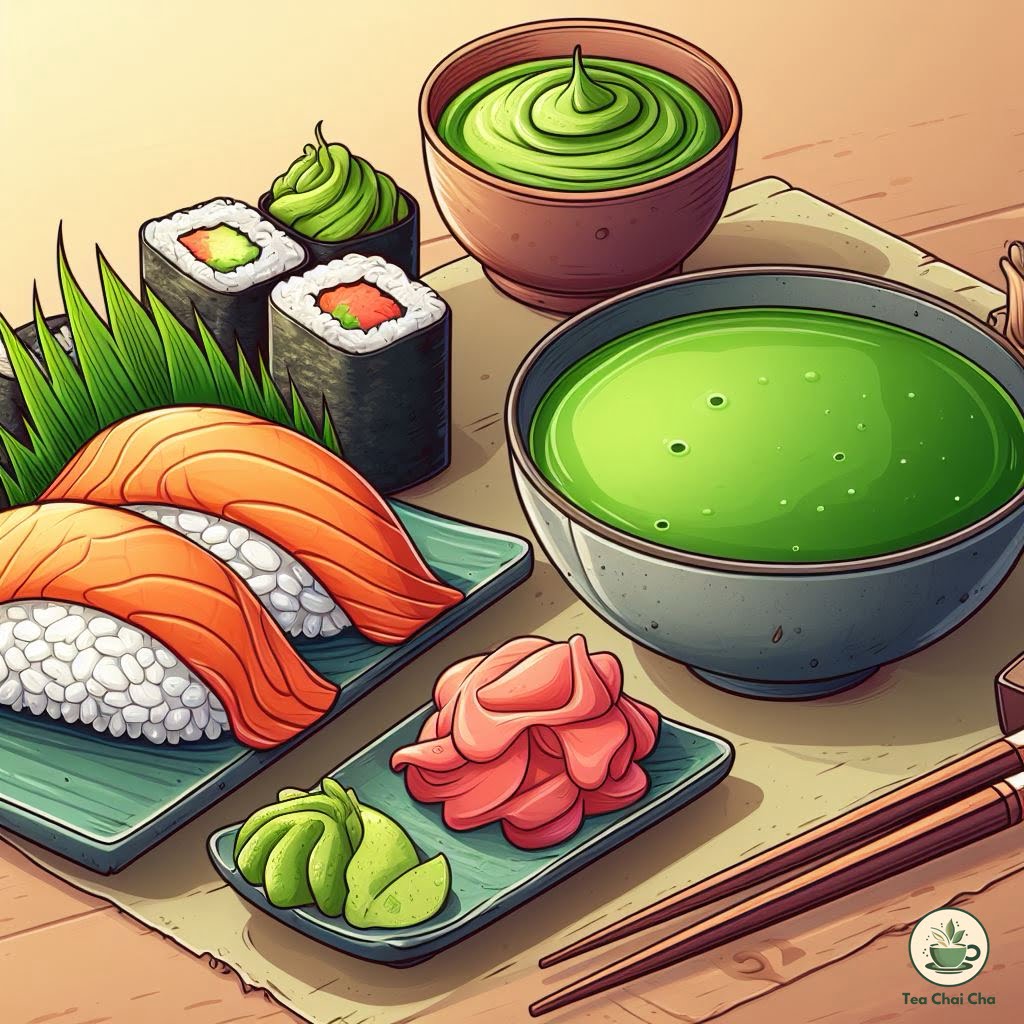
5. Savory Pairings
Believe it or not, Matcha can also work with savory dishes.
Try it with sushi, especially with a side of pickled ginger.
The earthy Matcha enhances the umami flavors in sushi, creating a unique and delightful combination.

Foods to Add Matcha Green Tea Powder In
Here’s a list of foods where you can add matcha for a unique twist:
- Smoothies: Boost your morning smoothie by adding a teaspoon of matcha powder for an earthy, slightly bitter flavor.
- Ice Cream: Create a deliciously creamy matcha ice cream for a cool, refreshing treat.
- Cookies: Add matcha to your cookie dough for a subtle, green tea kick in each bite.
- Lattes: Enjoy a frothy matcha latte by mixing matcha powder with steamed milk.
- Pancakes: Make fluffy, green matcha pancakes that are as delightful to look at as they are to eat.
- Yogurt: Stir matcha into plain yogurt to create a unique and healthy snack.
- Energy Bites: Blend matcha with nuts, dates, and honey to make energy-boosting, no-bake bites.

- Salad Dressing: Create a zesty matcha salad dressing by mixing matcha with olive oil, lemon juice, and honey.
- Rice Dishes: Add matcha to rice for a subtle flavor twist, often seen in Japanese cuisine.
- Cocktails: Surprise your guests with matcha-infused cocktails, like a matcha mojito or matcha margarita.
- Popcorn: Sprinkle matcha powder over popcorn for a unique, slightly savory snack.
- Oatmeal: Stir in matcha to your morning oatmeal for an antioxidant-rich start to your day.
- Muffins: Bake matcha-infused muffins for a delightful green tea flavor in a handheld treat.
- Sushi Rolls: Some sushi chefs incorporate matcha into the rice for a vibrant, slightly bitter twist.
- Soups: Add a pinch of matcha to creamy soups like potato or broccoli for a subtle depth of flavor.
6 Teas That Taste like Matcha Green Tea
Love the rich, earthy flavor of matcha green tea but looking to explore new options?
You’re in for a treat (last one)!
There are several teas out there that share similarities with matcha, offering unique and delightful experiences.
| Teas Similar to Matcha | Flavor Profile |
|---|---|
| Sencha Green Tea | Grassy, refreshing |
| Genmaicha Tea | Nutty, toasty |
| Hojicha Tea | Roasted, toasty with caramel |
| Gyokuro Tea | Umami, sweet, vegetal |
| Chinese Green Teas | Grassy, slightly nutty |
| Kukicha Tea | Mild, slightly sweet, nutty |
1. Sencha Green Tea
If you’re fond of matcha, sencha green tea might be your cup of tea.
It shares that vibrant green color and a hint of grassy undertones, though it’s not as intense as matcha.
Sencha has a refreshing taste, making it perfect for a light and rejuvenating tea session.
2. Genmaicha Tea
Genmaicha, a Japanese favorite, combines green tea with roasted brown rice.
This tea has a nutty, toasty flavor that marries well with the grassy notes of green tea.
It’s a unique and comforting option for those who enjoy matcha’s earthiness.
3. Hojicha Tea
Hojicha is another Japanese delight, but it’s quite different from matcha.
This roasted green tea has a warm, toasty flavor profile with a hint of caramel.
If you’re looking for a soothing tea with a twist, hojicha is a great choice.
4. Gyokuro Tea
Gyokuro is often considered the finest green tea in Japan.
It has a similar shade of green to matcha and shares some of its umami notes.
Gyokuro is known for its sweet, vegetal taste, making it a captivating option for those with a taste for refined teas.
5. Chinese Green Teas
Don’t forget to explore various Chinese green teas like Longjing (Dragon Well) or Bi Luo Chun.
While these teas have their unique characteristics, they share a delightful grassy and slightly nutty essence that can appeal to matcha enthusiasts.
6. Kukicha Tea
Kukicha, or twig tea, is a Japanese green tea made from stems and twigs.
It offers a mild, slightly sweet, and nutty flavor, making it a gentle alternative for those who enjoy matcha’s subtler side.
Have more questions? Let’s connect!
